Treatment cost
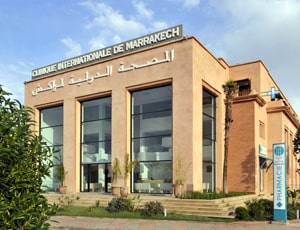
Apart from in-detail treatment procedures available, Clinique Internationale Marrakech located in Marrakesh, Morocco has a wide variety of facilities available for International Patients. Some of the facilities which are provided by them are Accommodation, Airport Transfer, Choice of Meals, SIM, TV inside room. Also listed below are some of the most prominent infrastructural details:

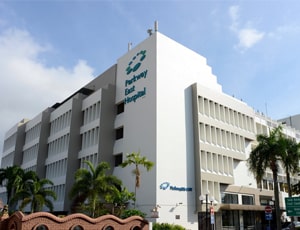
Parkway East Hospital located in Joo Chiat Pl, Singapore is accredited by JCI. Also listed below are some of the most prominent infrastructural details:
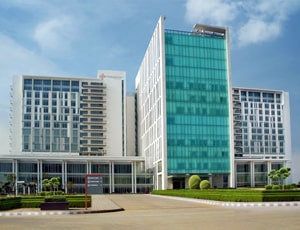
Types of ORIF in Medanta - The Medicity and its associated cost
| Treatment Option | Approximate Cost Range (USD) | Approximate Cost Range (INR) |
|---|---|---|
| ORIF (Overall) | 4002 - 7400 | 322908 - 598084 |
| ORIF for Fractured Bone | 3432 - 6201 | 278954 - 506768 |
| ORIF for Dislocated Joint | 3907 - 7191 | 319023 - 593958 |
DOCTORS IN 14 SPECIALITIES
FACILITIES & AMENITIES
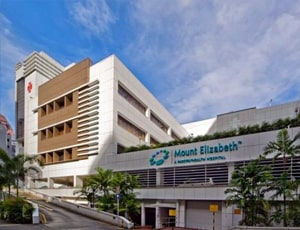
Mount Elizabeth Hospital located in Singapore, Singapore is accredited by JCI. Also listed below are some of the most prominent infrastructural details:
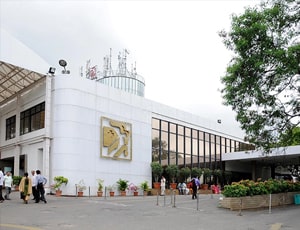
Types of ORIF in Apollo Hospitals and its associated cost
| Treatment Option | Approximate Cost Range (USD) | Approximate Cost Range (INR) |
|---|---|---|
| ORIF (Overall) | 3897 - 7286 | 326157 - 597665 |
| ORIF for Fractured Bone | 3348 - 6088 | 277329 - 515303 |
| ORIF for Dislocated Joint | 3980 - 7193 | 324733 - 604634 |
DOCTORS IN 14 SPECIALITIES
FACILITIES & AMENITIES
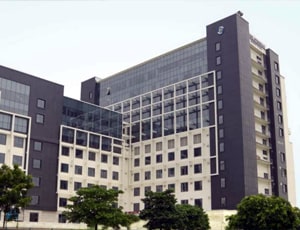
Types of ORIF in Venkateshwar Hospital and its associated cost
| Treatment Option | Approximate Cost Range (USD) | Approximate Cost Range (INR) |
|---|---|---|
| ORIF (Overall) | 3543 - 6590 | 292637 - 540480 |
| ORIF for Fractured Bone | 3054 - 5570 | 249331 - 457116 |
| ORIF for Dislocated Joint | 3566 - 6625 | 292524 - 542646 |
DOCTORS IN 13 SPECIALITIES
FACILITIES & AMENITIES
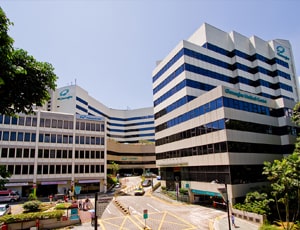
Gleneagles Hospital located in Napier Road, Singapore is accredited by JCI. Also listed below are some of the most prominent infrastructural details:
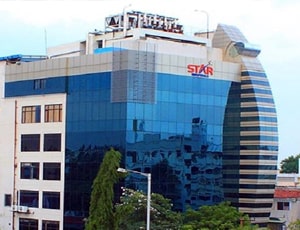
Types of ORIF in Star Hospitals and its associated cost
| Treatment Option | Approximate Cost Range (USD) | Approximate Cost Range (INR) |
|---|---|---|
| ORIF (Overall) | 3248 - 6054 | 264611 - 491205 |
| ORIF for Fractured Bone | 2826 - 5133 | 232890 - 416815 |
| ORIF for Dislocated Joint | 3323 - 6004 | 266876 - 495839 |
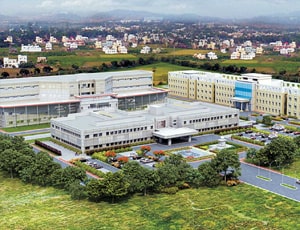
Types of ORIF in Global Health City and its associated cost
| Treatment Option | Approximate Cost Range (USD) | Approximate Cost Range (INR) |
|---|---|---|
| ORIF (Overall) | 3867 - 7371 | 322231 - 609523 |
| ORIF for Fractured Bone | 3371 - 6303 | 282727 - 514947 |
| ORIF for Dislocated Joint | 4009 - 7406 | 321336 - 601087 |
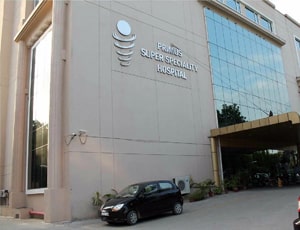
Types of ORIF in Primus Super Speciality Hospital and its associated cost
| Treatment Option | Approximate Cost Range (USD) | Approximate Cost Range (INR) |
|---|---|---|
| ORIF (Overall) | 3558 - 6596 | 290922 - 542148 |
| ORIF for Fractured Bone | 3054 - 5567 | 248485 - 459265 |
| ORIF for Dislocated Joint | 3557 - 6617 | 291694 - 540461 |
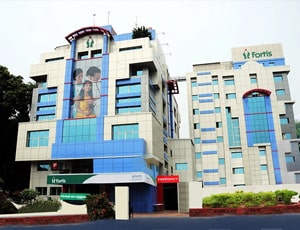
Types of ORIF in Fortis Malar Hospital and its associated cost
| Treatment Option | Approximate Cost Range (USD) | Approximate Cost Range (INR) |
|---|---|---|
| ORIF (Overall) | 3539 - 6565 | 290703 - 542557 |
| ORIF for Fractured Bone | 3036 - 5562 | 250793 - 459907 |
| ORIF for Dislocated Joint | 3549 - 6594 | 291309 - 538793 |
DOCTORS IN 9 SPECIALITIES
FACILITIES & AMENITIES
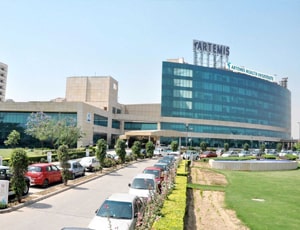
Types of ORIF in Artemis Health Institute and its associated cost
| Treatment Option | Approximate Cost Range (USD) | Approximate Cost Range (INR) |
|---|---|---|
| ORIF (Overall) | 3967 - 7280 | 321692 - 593941 |
| ORIF for Fractured Bone | 3361 - 6305 | 270608 - 512350 |
| ORIF for Dislocated Joint | 3961 - 7349 | 329232 - 588953 |
DOCTORS IN 15 SPECIALITIES
FACILITIES & AMENITIES
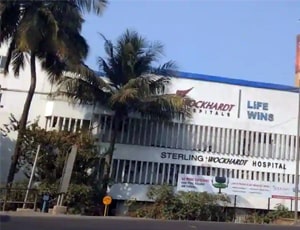
Types of ORIF in Sterling Wockhardt Hospital and its associated cost
| Treatment Option | Approximate Cost Range (USD) | Approximate Cost Range (INR) |
|---|---|---|
| ORIF (Overall) | 3560 - 6597 | 292255 - 541687 |
| ORIF for Fractured Bone | 3058 - 5590 | 250345 - 459659 |
| ORIF for Dislocated Joint | 3566 - 6608 | 292384 - 539069 |

Types of ORIF in Medicana International Istanbul and its associated cost
| Treatment Option | Approximate Cost Range (USD) | Approximate Cost Range (TRY) |
|---|---|---|
| ORIF (Overall) | 6061 - 11142 | 187386 - 341963 |
| ORIF for Fractured Bone | 4552 - 9153 | 138271 - 270927 |
| ORIF for Dislocated Joint | 6284 - 11172 | 188952 - 346443 |
DOCTORS IN 10 SPECIALITIES
FACILITIES & AMENITIES
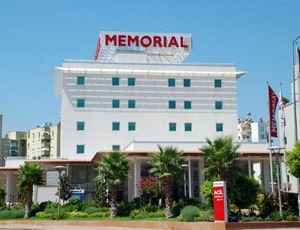
Types of ORIF in Memorial Antalya Hospital and its associated cost
| Treatment Option | Approximate Cost Range (USD) | Approximate Cost Range (TRY) |
|---|---|---|
| ORIF (Overall) | 6056 - 11199 | 190313 - 343227 |
| ORIF for Fractured Bone | 4485 - 8850 | 133217 - 277091 |
| ORIF for Dislocated Joint | 6175 - 11048 | 186080 - 336321 |
DOCTORS IN 11 SPECIALITIES
FACILITIES & AMENITIES
Open reduction internal fixation (ORIF) procedure aims at fixing a bone fracture that is considered to be very serious and in case realignment of the bone to the normal position is required with the help of screws, plates and other equipment.
ORIF surgery is a common procedure and is applicable for different bone segments of the body, including the hip, knee, arms, and thighs. ORIF surgery is performed by orthopaedic surgeons who have specialization in the musculoskeletal structure of the human body.
ORIF surgery is performed to stabilize the broken bone, which could be in any part of the body. The following are some of the common conditions that are treated with the help of an ORIF surgery:
● The bone pieces such as knee, hip, tibia-fibula, humerus, and femur are significantly out of alignment
● The bone pieces are piercing out through the skin
● The part of the bones in the above-mentioned parts of body is fractured, leading to formation of several pieces
● The fracture involves a knee joint
● The healing of the bones is not normal even after undergoing conservative treatment
Open reduction means open surgery aimed to set the bones as may be necessary after a fracture, while internal fixation means fixing of plates or screws and intramedullary bone nails in the case of humerus, tibia or femur bones to facilitate in the overall process of healing.
Micro motion across the lines of fracture is prevented with rigid fixation which not only helps promote healing but also prevents further infection which can happen when plates such as dynamic compression plates are used as implants.
Once the patient is under the influence of anesthesia, an incision is made at the site of the injury or the break and then the fracture is carefully realigned or the joint is replaced with extreme precision. The hardware required will be installed and the incision made will be closed with the help of stitches and staples. The inserted implants such as rods, pins, screws, and plates are permanent in many cases. In some cases, the implants are temporary and can be removed when the healing begins.
A cast is usually applied after ORIF surgery. Later when the healing process has sufficiently progressed, this cast will be replaced with something that is capable of bearing better weight than that. The cast is completely removed after a few weeks of the ORIF surgery. The following are the different types of ORIF procedures, depending on the locations of the fracture:
Occasionally cerclage wiring is used alone or in combination with a tension band wiring. If the surgeon allows, then K-wires can also be used. The reduction is checked by palpating the retropatellar surface (which requires a small arthrotomy) while the cerclage is tightened with the knee in extension.
The proximal pin ends are bent after the cerclage is tightened. They are further shortened and turned towards the quadriceps tendon and then it is driven into the patella to prevent any skin irritation and further loosening.
To remove sharp points, the distal pin ends are trimmed but then it is not bent for the purpose of easy removal. Two twists can be preferred by some surgeons to tighten the cerclage wire. But then they have to take extra care to ensure that no extra prominent wires are left protruding.
As the wires get twisted, the surgeon pulls it away from the patella to have them tightened. To prevent fixation failure, the wires should be twisted at least 5 times. When stainless steel wires are tightened, they tend to lose the sheen of the surface and it can break with further tightening. Some care is taken to eventually have the twisted wire positioned deeper into the soft tissue muscle layers. This procedure is used to treat a fractured knee or a fractured patella.
ORIF surgery for the ankle is performed in the prone position and a bump is placed under the ipsilateral hip. The patient may also be placed in the lateral decubitus position if medial malleolus fracture is not present.
Just medial to the posterior border of the fibula bone, a longitudinal incision is placed which allows good access to the Volkmann’s fragment and to the lateral malleolus. The sural nerve and saphenous vein are identified and protected.
The anatomy of the sural nerve is highly variable and hence meticulous blunt dissection has to be performed in the subcutaneous tissue. To gain access to the posterior aspect of the lateral malleolus, the peroneal tendons must be retracted medially. With the help of a lag and an antiglide plate, the fibular fracture is fixed classically but the construct of the fixation can vary depending upon the comminution and the fracture pattern.
Limited contact dynamic compression plate or one-third tubular plate can be employed to give additional stability in complicated fracture patterns. The latter plate is contoured by having the corners narrowed at the distal end to fit closely over distal fibula’s posterior border.
Within the wound, a second interval is further exploited between the Achilles tendon and the peroneal tendon more medially. From the posterior tibia, the flexor hallucis longus is lifted up to allow access to the posterior malleolus. Via the perimalleolar arterial, ring blood is supplied to the tibia. The fracture edge must be defined and devascularization of the fragment should not happen. In order to supplement the fixation, a small buttress plate can also be employed.
Through a standard medial incision, the medial malleolus can be addressed, but this can be challenging in a prone position when compared to the supine position due to the tendency of the leg to rotate externally. Hence it is good to have an assistant to hold the lower limb in case of internal rotation. Usually, with the help of two of the 3.5 lag screws, fixation of the medial side will be carried out.
Supracondylar fractures are common among femur fractures occurring proximal to the knee joint in the terminal of the femur in between the metaphyseal-diaphyseal junction and the femoral condyles. ORIF femur includes treatment of the fracture by incorporating intramedullary nails, plates and external fixators or total knee arthroplasty. The technique adopted will depend upon the bone quality and hemodynamic stability of the patient.
The angled blade plate of 95 degrees is a one-piece fixed angle device having a blade to be inserted in the condyles distally. But condylar screw system is much easier to use than angled blade plate. In the plate position, sagittal plane adjustments can be made which is not possible with blade plate. With an intercondylar split, the condylar screw is able to provide interfragmentary compression for the fractures.
With a cloverleaf distal portion that can be contoured, the condylar buttress plate is broad and can fit the lateral aspects of the distal femur. For the purpose of minimally displaced fractures, it can be used and most useful when fractures with articular extension in the sagittal and coronal planes have to be addressed. It is also used as an intraoperative backup device when some amounts of difficulties are faced while using the condylar screw system or the angled blade plate. In LISS or the less invasive stabilization system, a locking plate and a screw construct are used which ensures the preservation of the periosteal blood supply to the fracture. LISS plate is more useful in the case of osteoporotic bone.
The broken parts of the femur bone at the neck are put back in this surgery. The incision is made in the hip to view the damaged bone. The femur is straightened and broken pieces of the bone are put together.
Special metals, bars, plates, rods, screws can be used to keep the broken pieces together. An artificial implant may be placed to have the head of the femur specifically replaced. If the hip joint is also injured, an implant is placed to replace the hip socket too.
One of the main components of recovery is pain management after ORIF surgery. ORIF recovery time varies from one patient to the other, It also depends on the exact location of the surgery. ORIF ankle surgery recovery time is different from that of ORIF surgery of the hip. Recovery is typically painful and hence proper pain management is required after the ORIF surgery. Acetaminophen and codeine are usually prescribed. Research results reveal that ibuprofen or other kinds of nonsteroid anti-inflammatory drugs can slow down the process of healing during the recovery period. So these should be avoided during the recovery period.
Healing regimen physical therapy is also introduced during the recovery period since the body part that suffered the trauma will be held in an immobilized position for a very long period of time. As a result, the tendons, ligament, and muscles may grow weak with time.
With physical therapy, the strength comes back and endurance of the affected area increases with a range of motion. Physical therapy includes exercises, nerve stimulation, cold and hot packs, and ultrasound.
Ask your healthcare adviser for the best multiple options and choose the one that meets your expectations
The ORIF package cost in Morocco varies from one hospital to another and may offer different benefits. There are many hospital that cover the cost of pre-surgical investigations of the patient in the treatment package. Typically, the package cost of ORIF in Morocco includes the expenses related to the surgeon's fee, anesthesia, hospital, meals, nursing and ICU stay. Extended hospital stay, complications after the surgery or new diagnosis may affect the overall cost of ORIF in Morocco.
There are several best hospitals for ORIF in Morocco. Some of the best hospitals for ORIF in Morocco include the following:
Upon discharge from the hospital after ORIF in Morocco, the patients are advised to stay for about 14 days for recovery. This period is important to conduct all the follow-up tests to ensure that the surgery was successful and the patient can go back to the home country.
Apart from the cost of ORIF, the patient is also required to pay additionally for daily meals and guest house accommodation. These charges starts from USD 50 per person.
ORIF in Morocco is offered in almost all metropolitan cities, including the following:
After the ORIF takes place, the average duration of stay at the hospital is about 2 days. The doctors team review the patient's recovery during this time with the help of blood tests and imaging scans. Once they feel that everything is on track, the patient is discharged.
There are more than 1 hospitals that offer ORIF in Morocco. The above listed hospitals are approved to perform the surgery and have proper infrastructure to handle ORIF patients. Also, these hospitals follow the necessary guidelines as required by the medical associations for the treatment of ORIF patients.